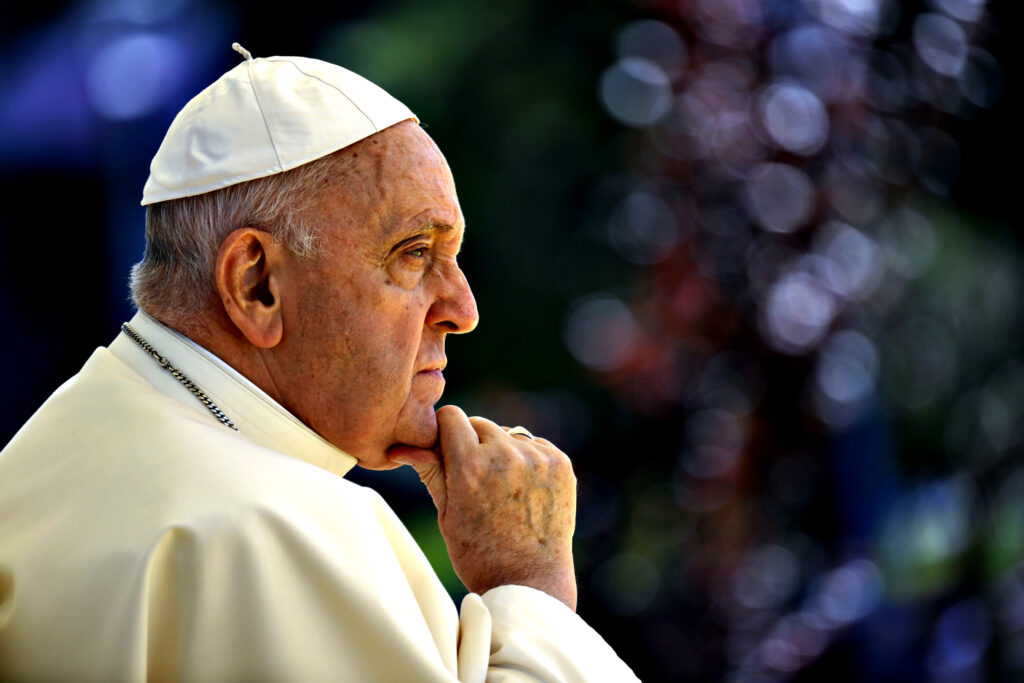The Death of a Pope: What Happens Next in the Vatican?
The death of a pope initiates one of the most sacred and time-honored rituals in the Catholic Church—a process steeped in centuries of tradition, secrecy, and symbolism. From sealing the papal apartment to the iconic white smoke of the Sistine Chapel, these rites ensure the smooth transition of leadership for the world’s 1.3 billion Catholics.
This period, known in Latin as the “sede vacante” or “vacant see,” marks the end of one papacy and the careful, prayerful election of another.

Who Takes Charge After the Pope Dies?
The Vatican follows strict protocol when a pope dies. The camerlengo (chamberlain of the Holy Roman Church) is immediately responsible for certifying the pope’s death and overseeing the transition. He formally seals the papal apartment and assumes temporary control over the Vatican’s administrative and financial matters until a new pontiff is elected.
Currently, the office of camerlengo is held by Cardinal Kevin Farrell, an Irish-born American who heads the Vatican’s laity office.
Most Vatican officials lose their positions upon a pope’s death, with key exceptions such as the Vatican’s foreign minister and the master of liturgical ceremonies—the official tasked with organizing the funeral rites and preparing the Sistine Chapel for the conclave.
The Dean of the College of Cardinals, presently Cardinal Giovanni Battista Re, is responsible for presiding over the funeral Mass and summoning cardinals to Rome for the election.
Pope Francis’ Funeral Rites: A Simpler Ceremony
In 2024, Pope Francis revised the rites to be used for his funeral, opting for a simplified ceremony that reflects his personal humility and pastoral identity. Rather than being buried in the traditional tombs beneath St. Peter’s Basilica, Francis chose St. Mary Major Basilica, home to the revered icon of the Virgin Mary, Salus Populi Romani.
What’s the Timeline After a Pope’s Death?
The death of a pope follows a well-orchestrated timeline:
- Confirmation and Public Viewing: After the pope’s death is verified, his body is moved to St. Peter’s Basilica for public veneration.
- Funeral and Burial: A funeral Mass is celebrated, with the burial occurring between the fourth and sixth day after death.
- Novendiali: This nine-day mourning period allows time for prayer, reflection, and the arrival of cardinals from around the globe.
- Conclave Start: The conclave, or papal election, must begin 15 to 20 days after the pope’s death, though it can start sooner if all eligible cardinals are present.
Who Can Vote for the Next Pope?
Only cardinals under the age of 80 are eligible to vote in the conclave. The current number of eligible electors is capped at 120, though this figure can fluctuate. As of the latest Vatican data, 135 cardinals are under 80 and thus eligible to vote.
Those over 80 may not vote but are allowed to participate in pre-conclave general congregations, where the state of the Church is discussed—often influencing voting priorities.
It was in such a gathering in 2013 that then-Cardinal Jorge Mario Bergoglio gave a speech about reaching the Church’s “existential peripheries,” a message that resonated and helped secure his election as Pope Francis.
Who Are the Leading Candidates for Pope?
Though technically any baptized male Catholic is eligible, since 1378, all popes have been chosen from among cardinals. Leading contenders often reflect different theological and geopolitical leanings within the Church. Notable papabile (“pope-ables”) include:
- Cardinal Pietro Parolin (Italy, age 70): Vatican Secretary of State and seasoned diplomat.
- Cardinal Marc Ouellet (Canada, age 80): Former head of the Congregation for Bishops.
- Cardinal Christoph Schönborn (Austria, age 80): Theological conservative and protégé of Benedict XVI.
- Cardinal Luis Antonio Tagle (Philippines, age 67): Advocate for the poor and head of the Church’s missionary efforts.
- Cardinal Matteo Zuppi (Italy, age 69): Francis protégé and president of the Italian bishops conference.
The Conclave: How Is a New Pope Elected?
The conclave takes place inside the Sistine Chapel, sealed off from the outside world. The process is intensely secret, with cardinals taking solemn oaths never to disclose what happens within.
Voting begins with a Mass called “Pro Eligendo Papa” (“For the Election of the Pope”), followed by the first ballot that same afternoon. If no pope is elected, the cardinals vote four times daily—two ballots in the morning, two in the afternoon—until a candidate receives a two-thirds majority.
Each ballot is inscribed with the Latin phrase “Eligo in Summum Pontificem” (“I elect as Supreme Pontiff”). After writing a name, the cardinal folds the ballot, walks to the altar, and swears before Christ that his vote is sincere.
The ballots are then read aloud by three designated scrutineers. If no winner emerges, the ballots are threaded together with a needle, burned, and the process repeats.
The Iconic Smoke Signals: White or Black?
The burning of the ballots produces the world-famous smoke signals from the Sistine Chapel chimney:
- Black smoke (fumata nera) means no pope has been elected.
- White smoke (fumata bianca) signals that a new pope has been chosen and accepted.
Chemical cartridges ensure the colors are clear—black smoke is produced with potassium perchlorate, anthracene, and sulfur; white smoke uses potassium chlorate, lactose, and chloroform resin. Bells are also rung to confirm the election.
Secrecy and Oaths of Silence
Pope Benedict XVI significantly tightened the rules of secrecy. All participants in the conclave, from cardinals to assistants, must swear an oath of “absolute and perpetual secrecy.” Violators face automatic excommunication, especially if they use recording devices or reveal election details.
Cardinals face additional penalties if found to have accepted bribes, collaborated with secular authorities, or made secret pacts.
“Habemus Papam”: The Announcement
Once a candidate is elected and accepts the papacy, he chooses a papal name, dons the white cassock, and appears on the balcony overlooking St. Peter’s Square.
The cardinal protodeacon declares: “Habemus Papam!” (“We have a pope!”), and the new pontiff offers his first apostolic blessing to the world.



